In the ever-evolving landscape of manufacturing, the decision between forging and machining becomes the linchpin determining the quality, efficiency, and cost-effectiveness of the end product. Navigating the complexities of these two processes requires a nuanced understanding of their intricacies, advantages, and applications.
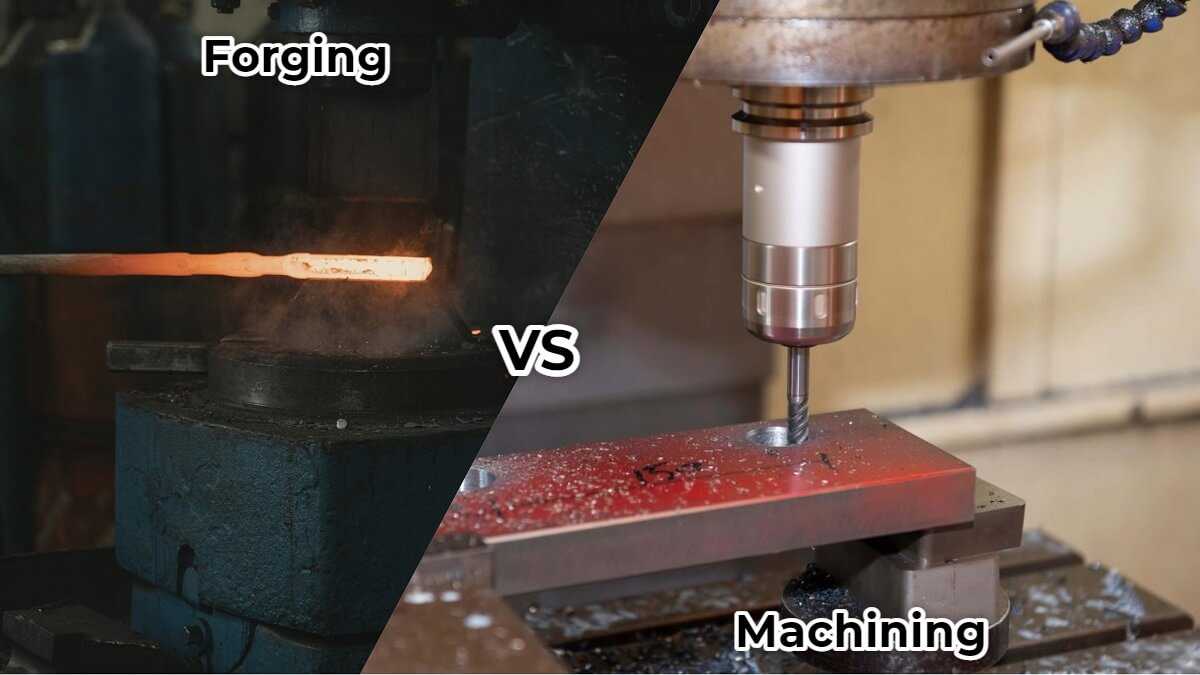
Forge ahead into the rich heritage of forging, a process rooted in the ancient art of shaping metals through controlled force. Beyond the superficial layer of its definition lies a profound method of enhancing material strength. When we talk about forging, we're delving into a process that extends beyond the mere shaping of metal; it's a transformative journey that refines the very essence of the material.
For instance, consider the intricacies of open-die forging, a method that imparts superior structural integrity by aligning grain flow, reducing porosity, and enhancing impact resistance. As the metal undergoes controlled deformation under immense pressure, its internal structure undergoes a metamorphosis, resulting in components with exceptional strength and durability.
Machining, on the other hand, emerges as a symphony of precision, a ballet of cutting and shaping that transforms raw materials into intricate components. Imagine a process where a computerized numerical control (CNC) machine meticulously carves out detailed designs with unmatched accuracy. It's not merely a mechanical dance but a choreography of technology and skill, where every cut and turn is a testament to human ingenuity.
The beauty of machining lies in its adaptability to a myriad of materials, from metals to plastics, allowing for the creation of components with unparalleled precision. From aerospace parts requiring razor-sharp accuracy to medical implants demanding microscopic intricacy, machining stands as the go-to method for achieving exacting specifications.
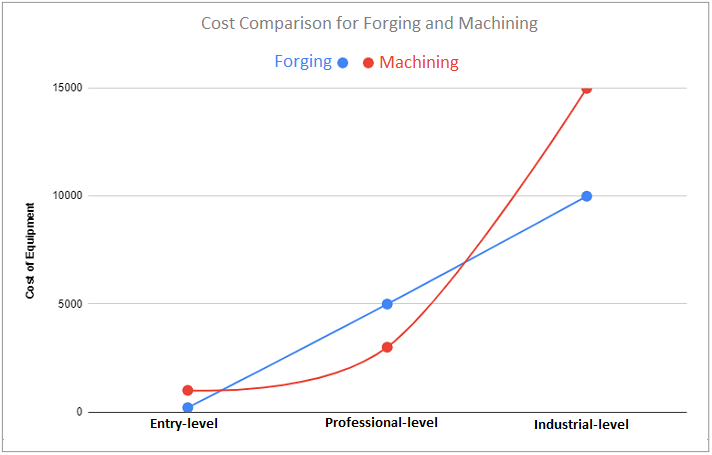
To truly grasp the essence of forging, let's explore the various techniques that fall under its expansive umbrella. Forging isn't a one-size-fits-all approach; it's a spectrum of methodologies tailored to specific applications.
Consider the precision of closed-die forging, a method where a piece of metal is placed in a die and shaped using compressive forces. The intricacies of closed-die forging extend beyond the initial impression, involving preform design, die materials, and temperature control. Delve into the world of isothermal forging, where temperature management plays a pivotal role in enhancing material flow, reducing die wear, and ultimately influencing the final product's quality.
The symphony of machining unfolds in a series of meticulously orchestrated steps. Imagine a CNC milling machine, where a cutting tool moves in multiple dimensions, crafting intricate patterns with mathematical precision. From the initial design phase to toolpath planning and execution, each step in machining is a meticulous dance of technology and craftsmanship.
Now, let's shine a spotlight on Richconn's turning services. Richconn, a leader in precision machining, excels in CNC turning services that redefine precision and efficiency. Their state-of-the-art CNC turning centers, equipped with advanced tooling and controls, ensure unparalleled accuracy in creating cylindrical components.
Richconn's turning services encompass a wide array of materials, from traditional metals to advanced alloys, showcasing their adaptability to diverse industry needs. The meticulous attention to detail in tool selection, cutting speeds, and feed rates distinguishes Richconn's turning services, making them a trusted partner for industries demanding the highest standards.
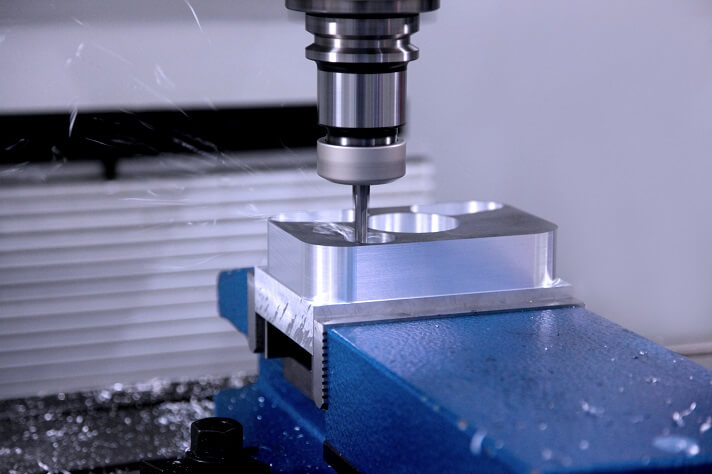
As we venture into the realm of forged products, it's crucial to understand the transformative impact of the forging process on material properties. Forged components exhibit a unique set of features that make them stand out in various industries. Consider the automotive sector, where forged crankshafts and connecting rods provide exceptional strength, reducing the risk of component failure even under extreme conditions.
Beyond the automotive realm, in the aerospace industry, forged parts such as landing gear components undergo stringent performance requirements. The inherent strength and structural integrity of forged materials contribute significantly to the safety and reliability of these critical components. Exploring the specifics of these applications allows us to appreciate the nuanced benefits that forging brings to diverse sectors.
Turning our attention to machined products, the precision achieved through machining opens avenues for unparalleled product traits. In the medical field, where precision is paramount, machined implants and surgical instruments showcase the pinnacle of accuracy. The intricate details achievable through machining contribute not only to the functionality of these products but also to the overall advancement of medical procedures.
Consider the electronic industry, where the demand for miniaturization is ever-present. Machined components in electronics, whether it be connectors or intricate parts for electronic devices, exemplify the capability of machining to meet stringent size and tolerance requirements. The ability to craft intricate details with microscopic precision positions machining as a cornerstone in the evolution of modern electronics.
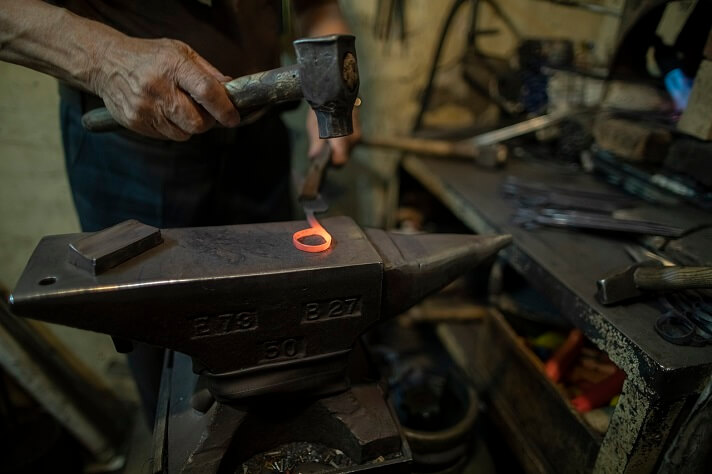
The applications of forging extend across a multitude of industries, each reaping the benefits of this robust manufacturing process. In the automotive sector, forged components not only enhance structural integrity but also contribute to weight reduction, improving fuel efficiency. The agricultural industry leverages forged parts for equipment that withstands rigorous field conditions, showcasing the durability and reliability forged products offer.
In the oil and gas sector, where extreme conditions prevail, forged components such as wellhead equipment endure high pressures and temperatures with resilience. The adaptability of forging to such diverse industries underscores its versatility and establishes it as a cornerstone in the production of critical components across the manufacturing spectrum.
Machining, with its precision-oriented nature, finds applications in industries with exacting standards. In the aerospace sector, where safety is non-negotiable, machined components like turbine blades demand uncompromising accuracy. The ability to produce complex, aerodynamically optimized shapes through machining contributes significantly to the efficiency and performance of aerospace systems.
In the telecommunications industry, CNC machined parts play a pivotal role in the manufacturing of antennas and communication devices. The intricate details achievable through machining ensure that these components meet the high standards required for seamless communication. Examining these applications elucidates the far-reaching impact of machining in creating components that power modern technologies.
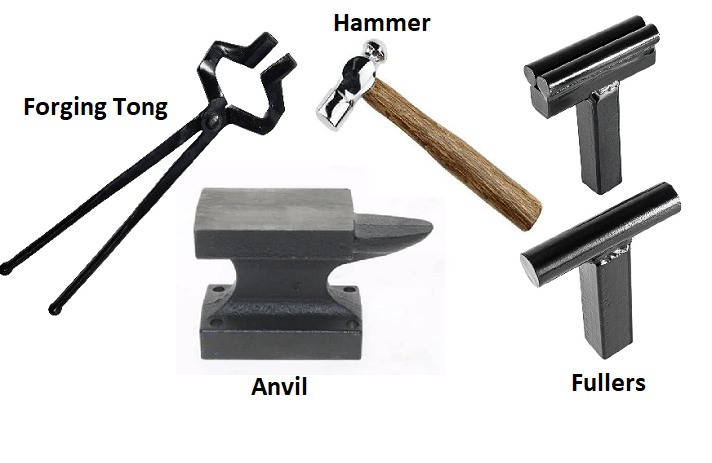
Forging, as a manufacturing process, boasts significant triumphs but is not without its tribulations. The inherent strength and improved metallurgical properties achieved through forging provide a competitive edge in industries where structural integrity is paramount. However, the journey of forging comes with its challenges. The upfront costs associated with tooling and die preparation can be substantial, and the intricacies of forging certain complex geometries may pose limitations.
Exploring the triumphs allows us to appreciate the profound impact forging can have on material properties, while acknowledging the tribulations prompts a balanced perspective, crucial for making informed decisions in manufacturing.
Machining, with its precision-centric approach, secures victories in industries where accuracy is non-negotiable. The ability to achieve tight tolerances and intricate shapes positions machining as a go-to method for applications such as medical devices and electronics. However, this journey is not without its challenges. Longer production cycles, especially when compared to certain forging processes, can be a drawback. Additionally, the wear and tear on cutting tools necessitate regular maintenance, contributing to operational costs.
Understanding the wins and woes of machining allows for a comprehensive evaluation, enabling manufacturers to harness its strengths while mitigating potential challenges.
Delving into the cost considerations of forging unveils a multifaceted landscape. While the upfront costs, including tooling and die preparation, might seem substantial, they are often offset by the economic advantages in mass production. The efficiency of forging processes in handling large volumes contributes to a lower per-unit cost, making it an economically viable option for industries requiring high quantities of components. Energy consumption during forging, although present, is often outweighed by the efficiency gains in material utilization.
Understanding the intricacies of forging costs is pivotal for manufacturers aiming to strike a balance between initial investments and long-term economic benefits.
In the realm of machining, costs are a nuanced consideration. The upfront costs may be comparatively lower, but the operational costs, including tooling maintenance and longer production cycles, add a layer of complexity. Machining's efficiency in small batch production scenarios aligns with industries that prioritize precision over mass production. The flexibility of machining to adapt to varying production scales offers a strategic advantage, allowing manufacturers to tailor their approach based on specific project requirements.
Navigating the cost landscape of machining involves a careful weighing of initial expenses against operational efficiency, ensuring a judicious allocation of resources.
Navigating the landscape of forging and machining involves adhering to stringent industry standards. In forging, standards ensure the quality and reliability of components. For example, aerospace components forged to specifications such as AMS 5643 undergo rigorous testing, ensuring they meet the demanding requirements of the industry. Machining standards, such as ISO 9001, set the framework for quality management systems, emphasizing precision, traceability, and continuous improvement.
Understanding and adhering to these standards isn't merely a compliance exercise; it's a commitment to delivering products of the highest quality, crucial for industries where safety and reliability are non-negotiable.
As we gaze into the future of manufacturing, the trends and innovations in forging and machining shape a dynamic landscape. The integration of smart technologies, such as IoT sensors in forging processes, enhances real-time monitoring and quality control. Machining embraces advancements like 5-axis CNC machining, pushing the boundaries of complexity and precision.
For manufacturers, staying ahead involves embracing these technological shifts, understanding the impact of digitization, and investing in the skills and technologies that define the next frontier of manufacturing excellence.
In the intricate world of manufacturing, where choices between forging and machining define the path to excellence, Richconn emerges as a beacon of precision. As a distinguished precision machine shop, Richconn combines expertise with cutting-edge technology to deliver unparalleled CNC machining and milling services.
With a commitment to quality and a legacy of precision, Richconn stands poised at the forefront of manufacturing innovation. Whether your needs demand the finesse of CNC machining or the versatility of CNC milling services, Richconn's state-of-the-art facilities and skilled craftsmen ensure your vision is transformed into reality with the utmost precision.
Embark on a journey of manufacturing excellence with Richconn, where precision meets proficiency, and every component is a testament to the artistry of precision manufacturing.
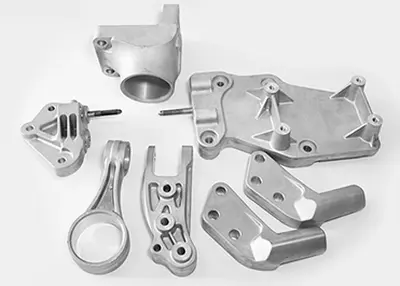 Aluminum Alloy Anodic Oxidation Common ProblemsOctober 23, 2023Anodizing is one of the most common metal surface treatment operations performed on aluminum parts. It is an electrochemical process that involves immersing aluminum parts in a series of tanks to transform the aluminum surface into a durable and corrosion-resistant finish.view
Aluminum Alloy Anodic Oxidation Common ProblemsOctober 23, 2023Anodizing is one of the most common metal surface treatment operations performed on aluminum parts. It is an electrochemical process that involves immersing aluminum parts in a series of tanks to transform the aluminum surface into a durable and corrosion-resistant finish.view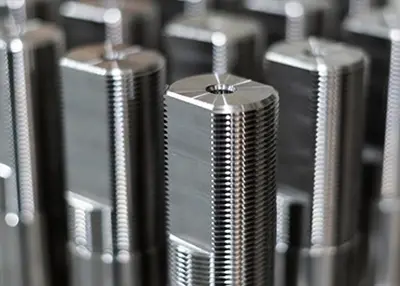 Some Knowledge You Need to Learn About Tapped HoleNovember 16, 2023Do you need taped holes? This article covers the factors you must consider to manufacture the tapped hole during the process.view
Some Knowledge You Need to Learn About Tapped HoleNovember 16, 2023Do you need taped holes? This article covers the factors you must consider to manufacture the tapped hole during the process.view 4 Things You Need to Know About Anodised AluminiumAugust 11, 2023Anodised aluminium has become a buzzword in various industries, from automotive to electronics, and for good reason. This process transforms regular aluminium into a powerhouse material with enhanced ...view
4 Things You Need to Know About Anodised AluminiumAugust 11, 2023Anodised aluminium has become a buzzword in various industries, from automotive to electronics, and for good reason. This process transforms regular aluminium into a powerhouse material with enhanced ...view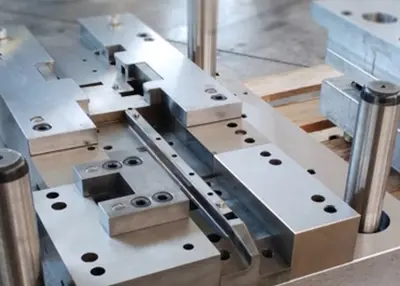 Experience Sharing on Design and Manufacturing of Metal Stamping DiesJuly 21, 2023Here, we will share some specific design and manufacturing experiences to provide our understanding of dies accumulated over the years. Through this article, we hope to give you a better understanding...view
Experience Sharing on Design and Manufacturing of Metal Stamping DiesJuly 21, 2023Here, we will share some specific design and manufacturing experiences to provide our understanding of dies accumulated over the years. Through this article, we hope to give you a better understanding...view What Is Mechanical Rack: Picking the Best for Your Custom PartsMay 22, 2024Delve into the world of equipment racks with this comprehensive article. Learn about their structure, design principles, materials, manufacturing processes, installation, commissioning, and more.view
What Is Mechanical Rack: Picking the Best for Your Custom PartsMay 22, 2024Delve into the world of equipment racks with this comprehensive article. Learn about their structure, design principles, materials, manufacturing processes, installation, commissioning, and more.view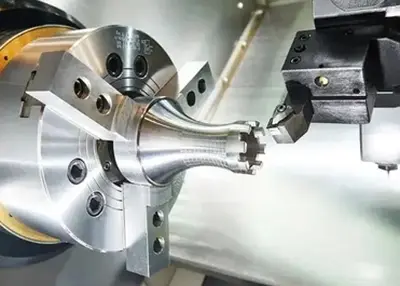 Challenge the Production of Mirror Discharge Mold Parts with H2 Grade Machining AccuracyMarch 2, 2023Challenge time: February 2023Challenge location: Longhua, Shenzhen, ChinaCustomer information: Singaporean high-quality mold vendorsNo nonsense, first upload the customer photo:Customer physical photo...view
Challenge the Production of Mirror Discharge Mold Parts with H2 Grade Machining AccuracyMarch 2, 2023Challenge time: February 2023Challenge location: Longhua, Shenzhen, ChinaCustomer information: Singaporean high-quality mold vendorsNo nonsense, first upload the customer photo:Customer physical photo...view